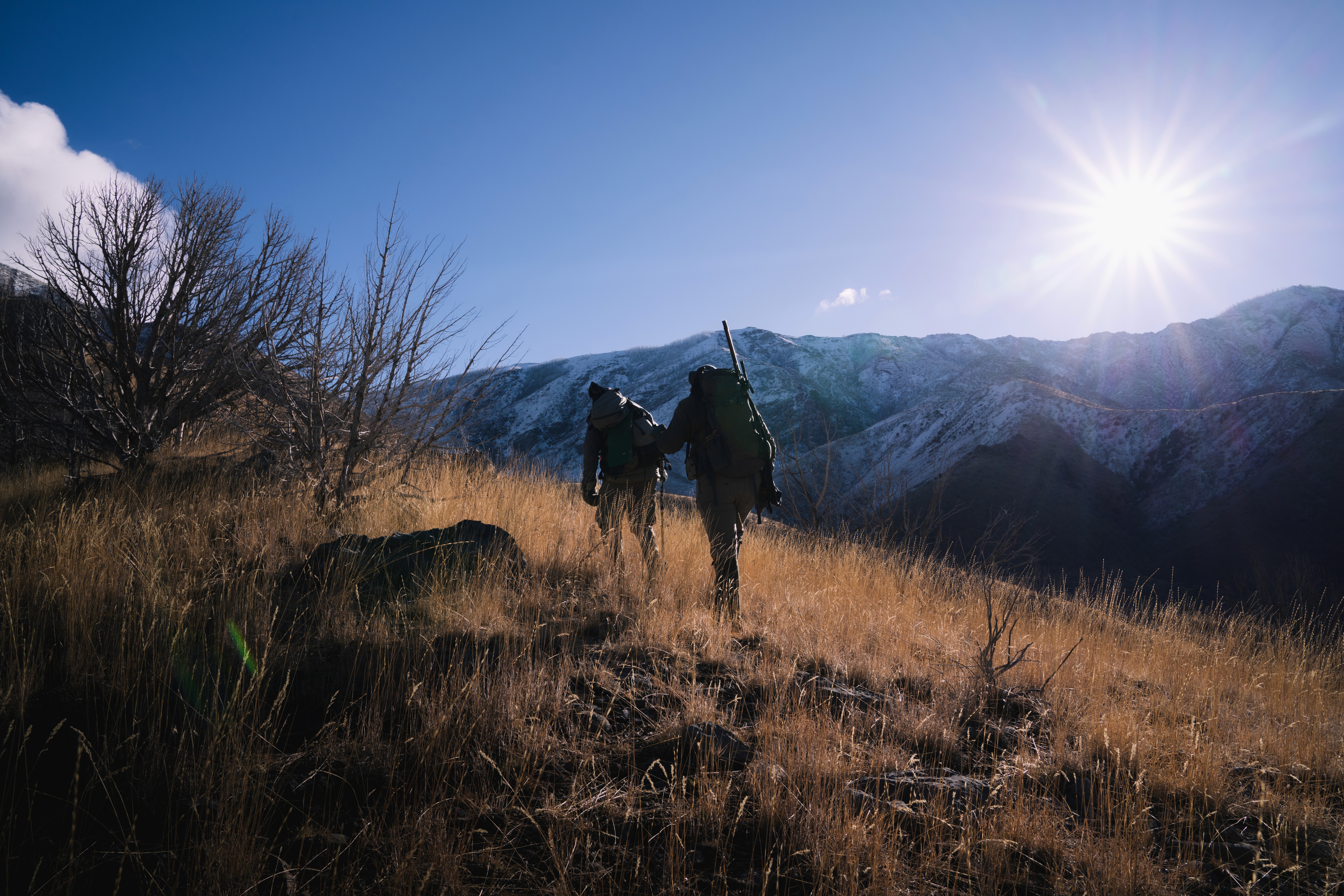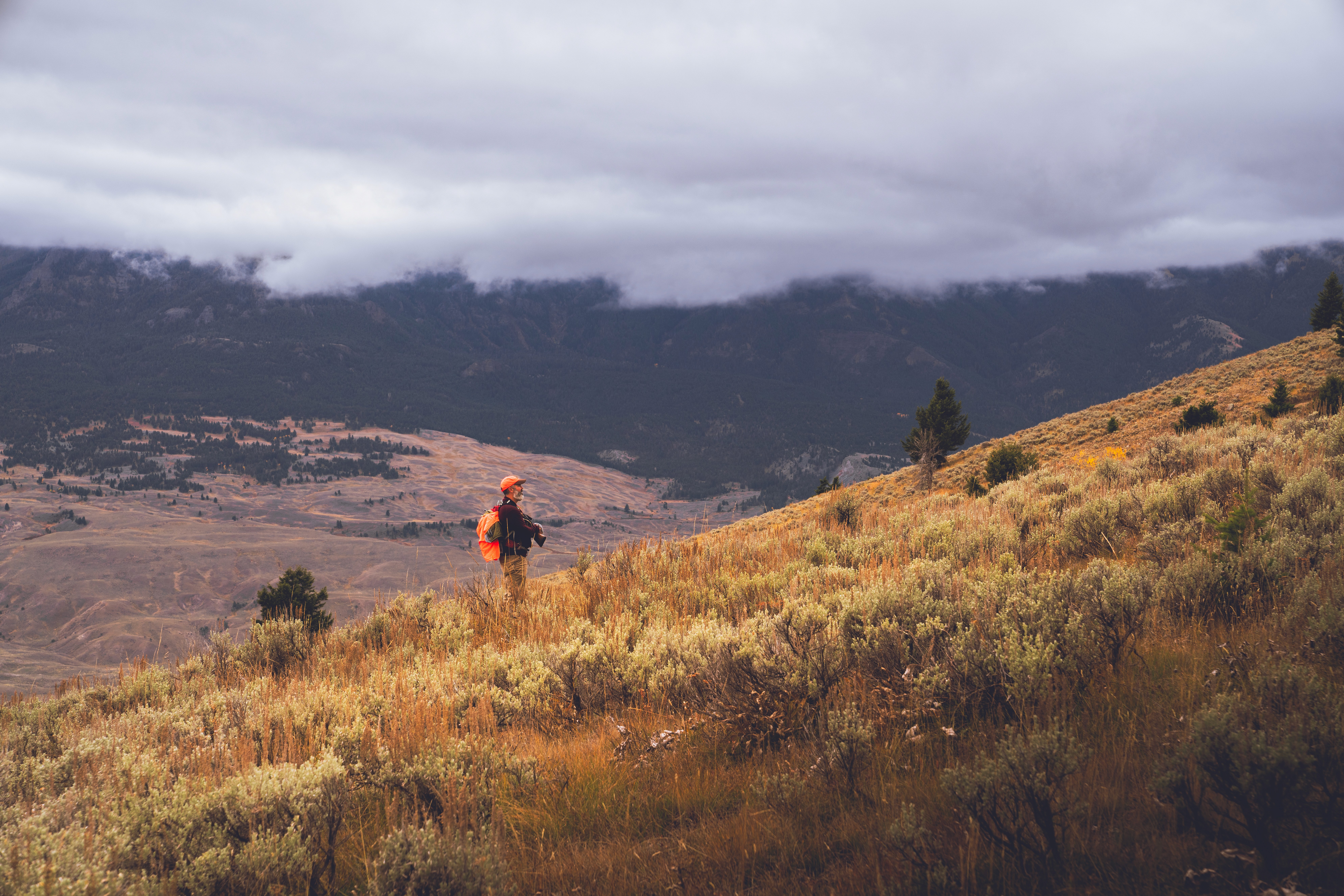



PackMule
How to Prep for Mountains...Without Mountains

On Friday, I had a coaching call with a Backcountry Ready member that's about to have an incredible summer.
While we chatted, he was on a layover in Houston on his way to New Zealand. He's hunting tahr and chamois for six days. Then he and his family are hiking around the mountains for another week or so.
Six weeks after he gets back, he leaves for a dall sheep hunt in the Northwest Territories.
Badass, right?
He's spending a big chunk of his summer in the mountains.
But here's the thing, he lives at around 400 feet above sea level in the southeastern United States.
When we were talking, he mentioned how excited he was to try out his training and see how it prepped him for the mountains.
He started training with us last November and he's been super consistent. He also tested incredibly well during our most recent Backcountry Readiness Assessment.
I know he's ready.
But still, the question sits in the back of most of our minds -- can we really be ready for terrain without getting on terrain?
The answer is yes. I'll explain.
First, a preface. Training on terrain is the best-case scenario. It will help you prepare more specifically for the rigors of your hunt.
However, there is a lot you can do without terrain to be as ready as possible.
For example, my business partner in my gym ran the Georgia Death Race this past March. It's a grueling 75-mile tramp through the Georgia mountains. He finished 35th overall out of several hundred competitors. It was his first ultra-marathon.
Most of his running training was done on flat ground.
Now, I understand that the Appalachians in Georgia are not the towering peaks of New Zealand or the Northwest Territories. But the illustration still works.
If you have a mountain hunt coming up and you don't live in the mountains, you just have to follow some simple principles to be ready in spite of not training on terrain.
1. Consistency: Before I talk about anything else, your biggest training ally is consistency. If you don't live in the mountains but you're heading to the mountains, you need a lot of training volume over time to prepare you. To accrue that volume, you must be consistent. Otherwise, you'll try to make up the difference by adding training intensity and it just won't work. You'll end up burning yourself out or hurting yourself. Then you really won't be ready for the mountains.
2. Build Efficiency Under Load: Ruck at low to moderate heart rates with loads mostly around 20% of body weight. When you do that, make sure your pack is set up to center the weight in your back and keep it close to your spine. If you ruck consistently this way for months, you will become dang efficient. That means even though you're on flat-ish ground, your body will have the necessary raw materials to carry heavier loads uphill.
3. Tons of Aerobic Capacity Training: Zones 1, 2, and 3 are your best friends. When you accrue a lot of training volume with them, they will lower your resting heart rate and they will keep your heart rate from jumping as soon as you do something strenuous -- like walking up a gaht dang mountain.
4. Relative Strength: The stronger you are relative to your body weight, the less every movement costs you. That means you need to do some heavy lifting.
5. Strength Endurance: Methods that improve strength endurance (eustress training, HICT, volume accumulation) train you to use your relative strength over time and as you fatigue. These take the heavy lifting you've done and teach your body to use your strength as you march uphill.
6. High-intensity Aerobic Training: Whether we like it or not, our heart rates will rise as we hike up a mountain with weight on our back. Aerobic capacity training helps keep it from jumping too high. But we still need to perform when it does rise. High-intensity aerobic training done in the form of lactate threshold intervals and V02max intervals helps us perform when our heart rate climbs. Plot twist, doing them also keeps your heart rate from rising too much as you climb.
7. Training at Climbing Joint Angles: Doing step-ups (HICT, regular, rounded back), using the stairclimber, single leg RDLs, and calf raises -- all of these movements train joint angles associated with uphill climbing. Strength in those ranges of motion will save you energy and have your body somewhat used to uphill terrain without getting on it.
If you have a mountain hunt coming up and you don't live in the mountains, hopefully this email eased your anxiety.
If you want even more certainty, reach out and we'll dial in your training so, like our member headed to New Zealand and Canada, you're definitely ready to go.
Click the link below to join Backcountry Ready and get your mountain prep dialed.
Join Backcountry Ready today.
Recent posts
Related Articles

Testing and Assessments
Dec 30, 2025
Where to Start with Hunting Fitness Testing
A map is useless for plotting a course to your desired location if you don’t know where you’re currently standing. You can’t make it to Point B without knowing your current Point A. You’ll meander, lost in the woods, wasting energy, without having any idea if you’re headed in the right direction. The same is true when hunters don’t assess their fitness before training.

Testing and Assessments
Dec 30, 2025
Where to Start with Hunting Fitness Testing
A map is useless for plotting a course to your desired location if you don’t know where you’re currently standing. You can’t make it to Point B without knowing your current Point A. You’ll meander, lost in the woods, wasting energy, without having any idea if you’re headed in the right direction. The same is true when hunters don’t assess their fitness before training.

Testing and Assessments
Dec 30, 2025
Where to Start with Hunting Fitness Testing
A map is useless for plotting a course to your desired location if you don’t know where you’re currently standing. You can’t make it to Point B without knowing your current Point A. You’ll meander, lost in the woods, wasting energy, without having any idea if you’re headed in the right direction. The same is true when hunters don’t assess their fitness before training.

Fitness Tips
Dec 21, 2025
Honest Efforts: Don't Mail In Meaningful Work
Despite all of this, I think everyone can agree that training involves effort. Zoom out and look at what humans are physically capable of and it's really amazing what sustained effort in any direction leads to. Ballet dancers, endurance athletes, baseball players, F1 drivers - just a few of the many testaments to sustained effort over time. While most of us aren’t trying to be the next Ohtani or Verstappen, we can take one lesson with us - consistent effort drives outcomes.

Fitness Tips
Dec 21, 2025
Honest Efforts: Don't Mail In Meaningful Work
Despite all of this, I think everyone can agree that training involves effort. Zoom out and look at what humans are physically capable of and it's really amazing what sustained effort in any direction leads to. Ballet dancers, endurance athletes, baseball players, F1 drivers - just a few of the many testaments to sustained effort over time. While most of us aren’t trying to be the next Ohtani or Verstappen, we can take one lesson with us - consistent effort drives outcomes.

Fitness Tips
Dec 21, 2025
Honest Efforts: Don't Mail In Meaningful Work
Despite all of this, I think everyone can agree that training involves effort. Zoom out and look at what humans are physically capable of and it's really amazing what sustained effort in any direction leads to. Ballet dancers, endurance athletes, baseball players, F1 drivers - just a few of the many testaments to sustained effort over time. While most of us aren’t trying to be the next Ohtani or Verstappen, we can take one lesson with us - consistent effort drives outcomes.

Mountain Hunting
Dec 15, 2025
How to Test Your Uphill Muscular Endurance for Mountain Hunting
Mountain hunting is a lot of things. It’s an adventure and for many hunters it’s a rite of passage. It’s a challenge of skill, a test of will, and, oftentimes, an experience that at least borders the spiritual. It is also an endeavor that requires a huge amount of muscular endurance. It’s tough to build your uphill muscular endurance to the right levels without knowing where you currently stand and what kind of training will move the needle for you. So, let’s learn you up on how to test your uphill muscle endurance for mountain hunting.

Mountain Hunting
Dec 15, 2025
How to Test Your Uphill Muscular Endurance for Mountain Hunting
Mountain hunting is a lot of things. It’s an adventure and for many hunters it’s a rite of passage. It’s a challenge of skill, a test of will, and, oftentimes, an experience that at least borders the spiritual. It is also an endeavor that requires a huge amount of muscular endurance. It’s tough to build your uphill muscular endurance to the right levels without knowing where you currently stand and what kind of training will move the needle for you. So, let’s learn you up on how to test your uphill muscle endurance for mountain hunting.

Mountain Hunting
Dec 15, 2025
How to Test Your Uphill Muscular Endurance for Mountain Hunting
Mountain hunting is a lot of things. It’s an adventure and for many hunters it’s a rite of passage. It’s a challenge of skill, a test of will, and, oftentimes, an experience that at least borders the spiritual. It is also an endeavor that requires a huge amount of muscular endurance. It’s tough to build your uphill muscular endurance to the right levels without knowing where you currently stand and what kind of training will move the needle for you. So, let’s learn you up on how to test your uphill muscle endurance for mountain hunting.

Testing and Assessments
Dec 30, 2025
Where to Start with Hunting Fitness Testing
A map is useless for plotting a course to your desired location if you don’t know where you’re currently standing. You can’t make it to Point B without knowing your current Point A. You’ll meander, lost in the woods, wasting energy, without having any idea if you’re headed in the right direction. The same is true when hunters don’t assess their fitness before training.

Fitness Tips
Dec 21, 2025
Honest Efforts: Don't Mail In Meaningful Work
Despite all of this, I think everyone can agree that training involves effort. Zoom out and look at what humans are physically capable of and it's really amazing what sustained effort in any direction leads to. Ballet dancers, endurance athletes, baseball players, F1 drivers - just a few of the many testaments to sustained effort over time. While most of us aren’t trying to be the next Ohtani or Verstappen, we can take one lesson with us - consistent effort drives outcomes.


